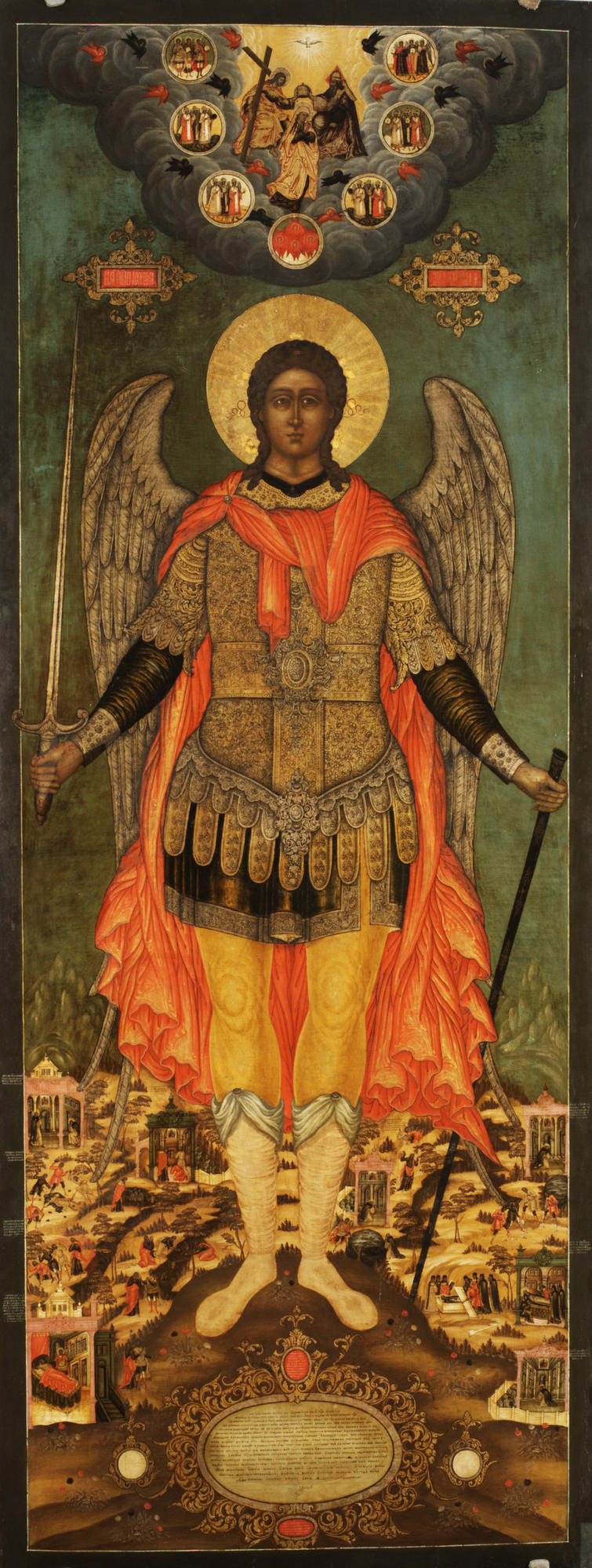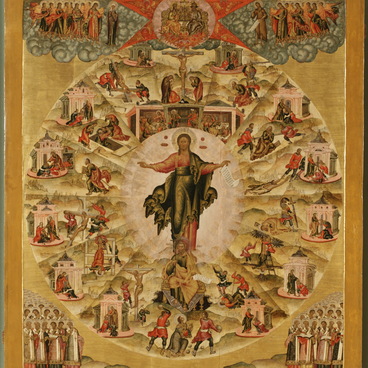The icon portrays the Archangel Michael. Christians revered him as the prince of heavenly host and defender of God’s throne. Also, he was thought to guide people’s souls to the heavenly world.
Archangel Michael in Acts
Время создания
1st third of the 18th century
Размер
197x77 cm
Техника
tempera
Коллекция
Выставка
7
Открыть в приложении#1
Unknown author
Archangel Michael in Acts
#4
#5
In iconography, he was often depicted in a military commander’s disguise. This is exactly the way he looks in the icon Archangel Michael in Acts, full-height, in armour, with a sword in his hand. Near the ears, there are ribbons flowing from his hair and symbolizing the angel’s hearing permanently attentive to God. On the clouds, there are heavenly powers in circles that impart more ornamentality to the icon. The fancy scrolls, cartouches, in the lower part of the icon contain inscriptions, the largest of them the text of a prayer addressed to the Archangel Michael.
#6
The monumental figure of the Archangel Michael shows European baroque features typical of the Yaroslavl icon painting of the 18th century: complex ornaments of the armour, beige-coloured jackboots with tops on the Archangel’s well-muscled legs, fancy scrolls.
#7
The miracle scenes in the icon are made as miniatures. They are scattered randomly, ignoring the date order. The margins and background host inscriptions explaining the icon scenes.
#8
The icon shows in detail one of the miracles, called the “miracle at Chonae”. Among Middle Age Christians, the Archangel Michael was viewed, above all, as a fighter for human souls; also, he would be addressed as a healing angel. According to legend, his healing power was associated with water and springs. Allegedly, a healing spring arose in a town in Asia Minor on a site where the archangel had appeared. Soon the spring became famous for its wonder working capability, so a growing number of people were converted to Christians. Heathens decided to destroy the hole place: they combined two river beds by means of a canal so that a strong water stream swept away both the water source and the church nearby. But the church’s pious sexton, Archippos, who lived in the church grounds, prayed for rescue. And, when the stream was about to destroy the church, the Archangel Michael turned up. He pierced a hole in the mountain, the water rushed in it, and the wonder making spring was saved.
#9
Yaroslavl Museum Reserve
читать дальшескрыть
00:00
00:00
1x
Archangel Michael in Acts
Время создания
1st third of the 18th century
Размер
197x77 cm
Техника
tempera
Коллекция
Выставка
7
Открыть в приложении
Поделиться



